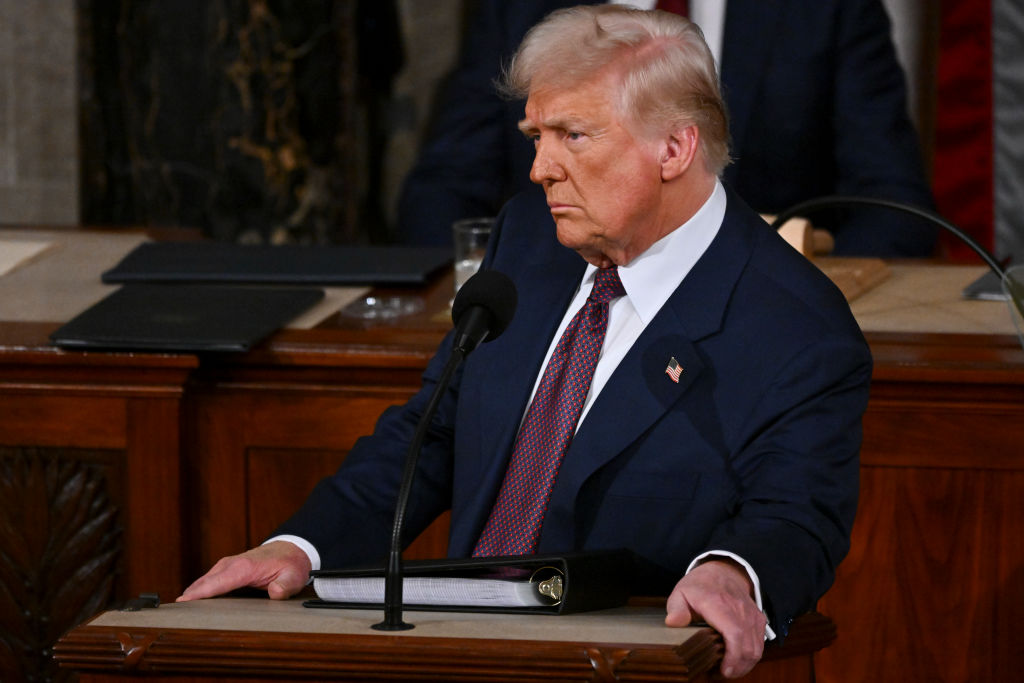Kiplinger Special Report: Business Costs for 2026
Fresh forecasts for 2026, to help you plan ahead and prepare a budget on a range of business costs, from Kiplinger's Letters team.

To help you understand what is going on in the economy and beyond, our highly experienced Kiplinger Letter team will keep you abreast of the latest developments and forecasts (Get a free issue of The Kiplinger Letter or subscribe). You'll get all the latest news first by subscribing, but we publish many (but not all) of our forecasts a few days afterward online. Here’s the latest...
Business Outlook: Economic impacts
When it comes to the economy, expect moderate growth. GDP figures should grow 1.6% in 2026, versus 1.7% in 2025. Manufacturing will continue to be sluggish, and consumer spending will slow a bit. But recession fears will fade into the background. Look for the Federal Reserve to cut its short-term interest rate by 2.0 points between September 2025 and the end of 2026, from 4.25% to 2.25%.
As the Fed cuts, other short-term rates will fall, too: Short-term consumer lending, home equity lines of credit and interest earned on Treasury bills. Long-term rates will likely rise a bit, with 10-year Treasury notes fluctuating around 4.5%. 30-year mortgage rates will be around 7% or a bit less. The unemployment rate will end 2026 at 4.5%, up slightly from 4.3% this year.
It’s likely inflation will stay stubborn, only getting down to 3.0% by the end of 2026, from 3.4% at the end of 2025. Tariffs will be more predictable next year, but businesses will still have to choose to absorb the cost or pass it on to customers. Tariffs will add about 15% to the cost of most imports, on average, this year; much more for some raw materials. 2026 tariffs are likely to target specific products or industries.
Corporate profits will rise 10% in 2026, a similar increase to 2025. Pay hikes figure to run 3.5%, similar to 2025, and close to the normal rate. Small businesses will see average wage hikes of 4.0%. Total benefit compensation will rise 3.8%, with an 8% rise in health insurance premiums. Prescription drugs are a big driver, with prices rising 3.4% and drug usage expanding. Spending on drugs will be up 8%, spurred by weight loss drugs, and gene and cell therapies.
Business Outlook: Energy costs
After easing this year, oil prices could dip a bit lower in 2026. As always, there is the risk of some sort of geopolitical crisis, likeliest in the Middle East, that could cause prices to spike. But barring that, the oil market seems well-supplied, while demand growth should be fairly modest. That suggests prices will trend lower.
Gasoline prices, which are down this year from 2024, could slip a bit more on average in 2026. Diesel will also hold fairly steady or possibly decline slightly. Natural gas tends to be volatile, but the overall trend should be up a bit. Gas prices were unusually low last year and have rebounded in 2025. Gas demand continues to grow, largely due to increasing electricity consumption, since natural gas is the top fuel for generating power in the U.S. Gas exports will also continue to rise. Unusually cold or mild weather could always cause gas prices to spike or crash. But otherwise, plan to pay 5%-10% more in 2026 than what you’re paying this year.
Budget more for electricity, too. Rates have been climbing swiftly as demand for power keeps soaring, especially from AI data centers. Figure on a 2%-4% increase for industrial and commercial customers compared with their rates this year.
Truck spot shipping rates will rise just 1% (excluding fuel surcharges), after a 2% rise in 2025, as manufacturing sees weak growth. Rail shipping costs will rise at about the same pace as wage growth, except that intermodal rates should continue easing as imports remain below normal. Ocean shipping rates will be back at low 2023 levels. Air cargo rates will ease, as volumes are set to decline.
From just $107.88 $24.99 for Kiplinger Personal Finance
Become a smarter, better informed investor. Subscribe from just $107.88 $24.99, plus get up to 4 Special Issues

Sign up for Kiplinger’s Free Newsletters
Profit and prosper with the best of expert advice on investing, taxes, retirement, personal finance and more - straight to your e-mail.
Profit and prosper with the best of expert advice - straight to your e-mail.
Business Outlook: Payroll costs
Payroll taxes are rising, as the $176,100 wage base rises to about $183,600. For firms that pay pension premiums to the Pension Benefit Guaranty Corporation, there will be no change in rates, with the exception of inflation-related indexing for flat-rate premiums, which will hover around $111 per plan participant in 2026. Variable-rate premiums for underfunded plans will be $52 per $1,000 of unfunded vested benefits (subject to a $747 or so per-participant ceiling).
2026 will be a bit of a mixed bag on insurance. Rates for commercial property insurance will decrease for the rest of 2025 and into 2026 because of intense competition among insurers for low-hazard risks. For those policies with favorable histories that are not heavily exposed to natural catastrophes, renewal rates should be flat or see up to a 15% decline. For those exposed to natural catastrophes, a rate hike of up to 10% is likely. For policies with recent losses, an average hike of up to 20%. Rates for primary casualty insurance, up 5%-10%. Umbrella and excess liability, up to a 20% increase. Companies renewing cyberinsurance policies should budget for an increase of up to 5%. For those with recent claims or incidents, a 10% hike. Companies can lower cyber premiums with bigger investments in digital security. Rates for directors and officers insurance will dip in 2026, similar to recent trends.
Legal costs for businesses will rise about 3%-5% next year, on average. Accounting costs for the typical company will rise up to 10% next year.
Business Outlook: Travel and transportation costs
Airfares will inch up slightly after a modest fall this year, as turbulence in prices during and after the pandemic has finally subsided. Production delays of new aircraft could squeeze airline capacity, thus a slight bump in ticket prices. Expect hotel room rates to rise just a bit — about 1% more than this year — though price hikes will vary depending on the type of room, hotel and location. Softening travel demand should keep rates in check.
Soccer’s World Cup tournament is being played in 16 North American cities, 11 of them in the U.S., from June 11 to July 19, 2026. Rooms near and around host cities will be extremely expensive and scarce.
Car rental rates will be slightly higher, as demand and supply equalize after years of market upheaval. Look for an average daily rate of just below $50, about a 2%-3% hike versus 2025. Vehicle availability has improved significantly.
Business Outlook: Property costs
Asking and effective rents for office space will rise at a quicker pace than the 2% or so rise for the rest of 2025. Vacancy rates will remain elevated. Newer, high-quality office space will likely see rent growth of about 3%-5%. Meanwhile, older properties are likely to see continued rent declines of 3%-4%. Asking rents for warehouses will likely pick up as new construction of warehouse space slows down significantly next year. Look for rents rising by about 2%-3%, after a modest decline of 1%-2% seen for the rest of this year. Rents for shopping centers will rise 1%-2%, on average, in 2026. Vacancy rates are low and retail tenants often have few suitable options.
This forecast first appeared in The Kiplinger Letter, which has been running since 1923 and is a collection of concise weekly forecasts on business and economic trends, as well as what to expect from Washington, to help you understand what’s coming up to make the most of your investments and your money. Subscribe to The Kiplinger Letter.
Related stories
Profit and prosper with the best of Kiplinger's advice on investing, taxes, retirement, personal finance and much more. Delivered daily. Enter your email in the box and click Sign Me Up.

John Miley is a Senior Associate Editor at The Kiplinger Letter. He mainly covers AI, technology, telecom and education, but will jump on other business topics as needed. In his role, he provides timely forecasts about emerging technologies, business trends and government regulations. He also edits stories for the weekly publication and has written and edited email newsletters.
He holds a BA from Bates College and a master’s degree in magazine journalism from Northwestern University, where he specialized in business reporting. An avid runner and a former decathlete, he has written about fitness and competed in triathlons.
-
 Forget FIRE: Why ‘FILE’ Is the Smarter Move for Child-Free DINKs
Forget FIRE: Why ‘FILE’ Is the Smarter Move for Child-Free DINKsHow shifting from "Retiring Early" to "Living Early" allows child-free adults to enjoy their wealth while they’re still young enough to use it.
-
 7 Tax Blunders to Avoid in Your First Year of Retirement
7 Tax Blunders to Avoid in Your First Year of RetirementA business-as-usual approach to taxes in the first year of retirement can lead to silly trip-ups that erode your nest egg. Here are seven common goofs to avoid.
-
 How to Plan for Social Security in 2026's Changing Landscape
How to Plan for Social Security in 2026's Changing LandscapeNot understanding how the upcoming changes in 2026 might affect you could put your financial security in retirement at risk. This is what you need to know.
-
 Don't Trade After-Hours Without Reading This
Don't Trade After-Hours Without Reading ThisAre you a night owl or an early bird with a yen for active trading? Before you transact after-hours, consider these tips and potential traps.
-
 A Contrarian Approach Pays Off for This Bond Fund
A Contrarian Approach Pays Off for This Bond FundThe Dodge & Cox Income Fund has outperformed in 2025 thanks to its managers' fearless approach.
-
 Where to Stash Cash as Yields Fall, According to Advisers
Where to Stash Cash as Yields Fall, According to AdvisersYour best options depend on how soon you'll need the money and your tolerance for risk.
-
 My Top 10 Stock Picks for 2026
My Top 10 Stock Picks for 2026Each year, we ask an expert to pick 10 stocks that have the potential to beat the market over the next 12 months. Here are his choices for 2026.
-
 Special Report: The Future of American Politics
Special Report: The Future of American PoliticsThe Kiplinger Letter The Political Trends and Challenges that Will Define the Next Decade
-
 We're Still Bullish on Stocks
We're Still Bullish on StocksWe're still bullish on stocks for 2026, but now is the time for investors to pull in their horns and dial down risk.
-
 Stocks That Could Take Off in the New Year
Stocks That Could Take Off in the New YearThere are three areas of potential in the 2026 stock market.
-
 Changes Are Coming for This Invesco Bond Fund
Changes Are Coming for This Invesco Bond FundThe Invesco BulletShares 2026 Corporate Bond ETF's bonds will mature in 2026. Here's what investors should do.